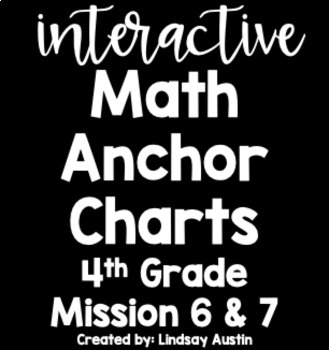Interactive Anchor Charts-4th Grade CCSS Decimals and Customary Units
Lindsay Austin
110 Followers
Grade Levels
3rd - 5th
Subjects
Resource Type
Standards
CCSS4.MD.A.1
CCSS4.MD.A.2
CCSS4.NF.C.5
CCSS4.NF.C.6
CCSS4.NF.C.7
Formats Included
- Zip
Pages
22 pages
Lindsay Austin
110 Followers
What educators are saying
This resource was very handy, especially for my students with IEPs who use visuals as a way to support their learning!
Also included in
- NOW IN BLACK AND WHITE AND COLORED ANCHOR CHARTS!!Product Description:These Interactive Anchor Charts/Notes are designed to help students learn to take notes about the different skills and procedures used in math. This product can be used alongside Modules of Engage New York or Zearn curriculum butPrice $25.00Original Price $30.00Save $5.00
Description
NOW IN BLACK AND WHITE AND COLORED ANCHOR CHARTS!!
These Interactive Anchor Charts/Notes are designed to help students learn to take notes about the different skills and procedures used in math. This product can be used alongside Modules of Engage New York or Zearn curriculum but are blank anchor charts based on the models found in CCSS, so it can be used to help reinforce CCSS 4th grade skills taught any way. What's Included- Anchor Charts with blank student interactive notes for the following:
MISSION 6
--Tenths
--Hundredths
--Comparing and Ordering Decimals
--Add Decimals
MISSION 7
--Customary Conversions: Length/Distance and Weight
--Customary Conversions: Capacity
--Land of Gallon
--Time
Total Pages
22 pages
Answer Key
N/A
Teaching Duration
N/A
Report this resource to TPT
Reported resources will be reviewed by our team. Report this resource to let us know if this resource violates TPT’s content guidelines.
Standards
to see state-specific standards (only available in the US).
CCSS4.MD.A.1
Know relative sizes of measurement units within one system of units including km, m, cm; kg, g; lb, oz.; l, ml; hr, min, sec. Within a single system of measurement, express measurements in a larger unit in terms of a smaller unit. Record measurement equivalents in a two-column table. For example, know that 1 ft is 12 times as long as 1 in. Express the length of a 4 ft snake as 48 in. Generate a conversion table for feet and inches listing the number pairs (1, 12), (2, 24), (3, 36),...
CCSS4.MD.A.2
Use the four operations to solve word problems involving distances, intervals of time, liquid volumes, masses of objects, and money, including problems involving simple fractions or decimals, and problems that require expressing measurements given in a larger unit in terms of a smaller unit. Represent measurement quantities using diagrams such as number line diagrams that feature a measurement scale.
CCSS4.NF.C.5
Express a fraction with denominator 10 as an equivalent fraction with denominator 100, and use this technique to add two fractions with respective denominators 10 and 100. For example, express 3/10 as 30/100, and add 3/10 + 4/100 = 34/100.
CCSS4.NF.C.6
Use decimal notation for fractions with denominators 10 or 100. For example, rewrite 0.62 as 62/100; describe a length as 0.62 meters; locate 0.62 on a number line diagram.
CCSS4.NF.C.7
Compare two decimals to hundredths by reasoning about their size. Recognize that comparisons are valid only when the two decimals refer to the same whole. Record the results of comparisons with the symbols >, =, or <, and justify the conclusions, e.g., by using a visual model.



